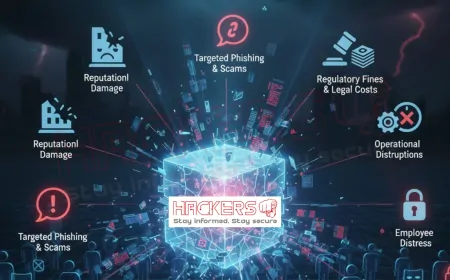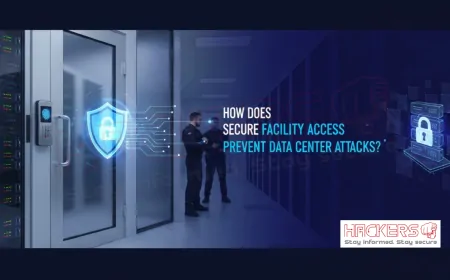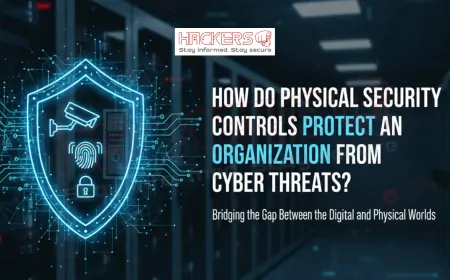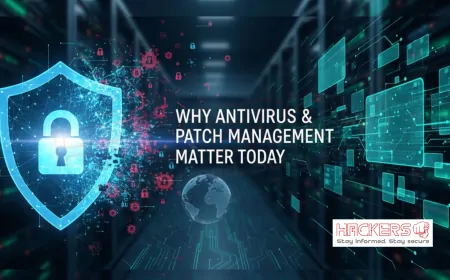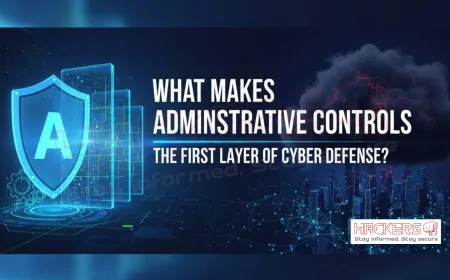How Is AI Transforming Zero-Day Threat Detection in 2025?
Imagine waking up to news of a massive cyberattack that crippled major companies, all because of a flaw no one knew existed. That is the reality of zero-day threats: vulnerabilities in software that attackers exploit before developers even know they are there. In 2025, these invisible dangers remain one of the biggest challenges in cybersecurity. But something powerful is changing the game. Artificial intelligence, or AI, is stepping in to detect these threats faster and smarter than ever before. This blog explores how AI is reshaping zero-day threat detection. We will break down complex ideas into simple terms, show real-world examples, and look ahead to what the future holds. Whether you are a business owner, a tech enthusiast, or just curious about online safety, this guide will help you understand the revolution happening right now.

Table of Contents
- What Are Zero-Day Threats?
- Traditional Detection Methods and Their Limits
- How AI Works in Zero-Day Detection
- Key AI Techniques Used in 2025
- Real-World Examples of AI in Action
- Benefits of AI-Powered Detection
- Challenges and Limitations
- Future Trends in AI and Zero-Day Defense
- Conclusion
What Are Zero-Day Threats?
A zero-day threat refers to a security flaw in software that is unknown to the vendor or the public. The term "zero-day" means the developer has zero days to fix it before attackers use it. These vulnerabilities are highly valuable on the dark web because they allow hackers to bypass all known defenses.
Unlike regular bugs, zero-day exploits leave no trace in signature databases. Traditional antivirus tools rely on known patterns, called signatures, to spot malware. But with zero-days, there is no signature yet. This makes them silent and deadly.
In 2025, zero-day attacks target everything from mobile apps to cloud systems. High-profile incidents, like the ones affecting government networks, show how one unseen flaw can cause widespread damage.
Traditional Detection Methods and Their Limits
Before AI became mainstream in security, companies used rule-based systems. These include:
- Signature-based detection: Matching code against a library of known threats.
- Heuristics: Looking for suspicious behavior based on predefined rules.
- Sandboxing: Running unknown files in isolated environments to observe actions.
While helpful, these methods fail against zero-days. Attackers craft new code variations daily. Keeping signature databases updated is a never-ending race. Heuristics often trigger false alarms, overwhelming security teams. Sandboxing takes time, and clever malware can detect when it is being watched and stay dormant.
How AI Works in Zero-Day Detection
AI changes the approach from reactive to proactive. Instead of looking for known bad code, AI learns what normal behavior looks like. It then flags anything that deviates, even if it has never been seen before.
Think of AI as a vigilant guard dog. It does not need to know every thief by name. It just knows when someone is acting strangely in the yard.
Machine learning models train on massive datasets of network traffic, file activities, and user actions. Over time, they build a baseline of "normal." When a zero-day exploit tries to run, it creates tiny anomalies: unusual file access, odd network calls, or strange process chains. AI spots these in real time.
Key AI Techniques Used in 2025
Several AI methods power modern zero-day detection:
- Anomaly detection: Identifies deviations from normal patterns without prior examples of attacks.
- Behavioral analysis: Tracks how processes interact over time, not just static code.
- Natural language processing (NLP): Analyzes logs and alerts in human-readable form for faster response.
- Deep learning: Uses neural networks to find hidden patterns in massive, unstructured data.
- Reinforcement learning: Improves itself by simulating attacks in safe environments.
| Technique | How It Helps Zero-Day Detection | Example Tools in 2025 |
|---|---|---|
| Anomaly Detection | Spots unknown threats by comparing to normal behavior | Darktrace, Splunk UBA |
| Behavioral Analysis | Monitors runtime actions of files and users | CrowdStrike Falcon, Microsoft Defender AI |
| Deep Learning | Processes huge datasets to find subtle threats | Google Chronicle, Deep Instinct |
| Reinforcement Learning | Learns optimal response by trial and error in simulations | CylancePROTECT, IBM QRadar Advisor |
Real-World Examples of AI in Action
In early 2025, a major banking network faced a zero-day attack targeting a flaw in a payment gateway. Traditional tools missed it because the malware used encrypted communication. An AI system from SentinelOne noticed unusual API call patterns at 2 a.m., blocked the process, and alerted admins within seconds. The attack was stopped before any data left the network.
Another case involved a healthcare provider. A new ransomware variant exploited a zero-day in a medical imaging app. Palo Alto Networks' Cortex XDR used behavioral AI to detect file encryption starting in an unusual directory. It isolated the infected machine and rolled back changes, saving patient records.
These stories show AI does not just detect: it responds intelligently.
Benefits of AI-Powered Detection
AI brings clear advantages:
- Faster response: Detects threats in milliseconds, not hours.
- Lower false positives: Learns context, reducing alert fatigue.
- Scalability: Handles millions of events per second across global networks.
- Adaptability: Improves as it sees more data, unlike static rules.
- Cost savings: Prevents breaches that cost millions in recovery.
A 2025 Gartner report estimates AI-driven systems reduce successful zero-day exploits by 70 percent compared to traditional setups.
Challenges and Limitations
No solution is perfect. AI faces hurdles:
- Adversarial attacks: Hackers craft input to fool AI models.
- Data bias: Poor training data leads to blind spots.
- Privacy concerns: Monitoring user behavior raises ethical questions.
- High initial cost: Training and hardware are expensive for small firms.
- Explainability: Some AI decisions are hard to understand, slowing trust.
Security teams must combine AI with human oversight to address these gaps.
Future Trends in AI and Zero-Day Defense
Looking ahead, several trends will shape 2025 and beyond:
- AI-native security platforms that integrate detection, response, and recovery.
- Federated learning: Models train across organizations without sharing sensitive data.
- Quantum-resistant AI: Preparing for future computing threats.
- Zero-trust architecture powered by continuous AI verification.
- Automated patch simulation: AI predicts and tests fixes before deployment.
By 2030, experts predict over 90 percent of enterprise security will rely on AI as the first line of defense.
Conclusion
Zero-day threats remain a top concern in 2025, but AI is transforming how we fight them. From anomaly detection to behavioral analysis, AI tools spot the unseen, respond in real time, and learn from every encounter. While challenges like adversarial attacks exist, the benefits far outweigh the risks. Companies adopting AI today are not just defending: they are staying ahead.
The future of cybersecurity is intelligent, adaptive, and proactive. As AI evolves, so does our ability to protect the digital world. Start exploring AI-powered solutions now, and turn the tide against zero-day dangers.
What is a zero-day vulnerability?
A zero-day vulnerability is a software flaw unknown to the vendor, giving them zero days to fix it before attackers exploit it.
Why are zero-day attacks hard to detect?
They use new, unknown code with no matching signature in traditional antivirus databases, making rule-based tools blind to them.
How does AI detect zero-day threats?
AI learns normal system behavior and flags any unusual activity, even if the threat has never been seen before.
What is anomaly detection in cybersecurity?
It is an AI method that identifies deviations from established patterns of normal network or user activity.
Can AI completely replace human security analysts?
No. AI handles volume and speed, but humans provide context, ethics, and final decision-making.
What are false positives in threat detection?
They are harmless activities mistakenly flagged as threats, causing unnecessary alerts.
How does behavioral analysis differ from signature-based detection?
Signature-based looks for known bad code. Behavioral watches how code acts at runtime, catching unknown threats.
Is AI-based detection expensive?
Initial setup can be costly, but it saves money long-term by preventing breaches.
Can small businesses use AI for zero-day protection?
Yes. Cloud-based AI security services offer affordable, scalable options for any size organization.
What is adversarial AI in cybersecurity?
It refers to attacks designed to trick AI models by altering input data slightly.
How do AI systems reduce alert fatigue?
They prioritize real threats using context, lowering the number of low-risk alerts analysts review.
What role does machine learning play in zero-day defense?
It trains models on vast data to recognize patterns and predict threats without predefined rules.
Are there privacy risks with AI monitoring?
Yes. Constant behavior tracking can collect personal data, so strong privacy policies are essential.
What is sandboxing, and why is it limited against zero-days?
Sandboxing runs suspicious files in isolation. Some advanced malware detects this and stays inactive.
How fast can AI detect a zero-day exploit?
Top systems detect and respond in milliseconds to seconds after the anomaly begins.
What is deep learning, and how is it used in security?
Deep learning uses multi-layer neural networks to find complex patterns in large, unstructured data like network logs.
Can AI predict zero-day vulnerabilities before exploitation?
Emerging tools analyze code for weakness patterns, but full prediction is still developing.
What is federated learning in cybersecurity?
It allows AI models to improve across organizations without sharing raw sensitive data.
How does AI help with incident response?
It automates containment, rollback, and forensic analysis, speeding recovery after detection.
What should companies do to prepare for AI-driven security?
Invest in training, choose reputable AI tools, and maintain human-AI collaboration protocols.
What's Your Reaction?















